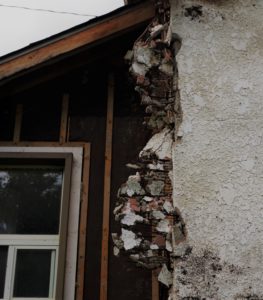Asbestos
Where can asbestos be found in an industrial setting?
In this article Abigail Morrison, Senior Associate Solicitor at JMW Solicitors, offers some advice on the most common places where asbestos can be located in an industrial building.

Asbestos was widely used in construction before it was banned from use in 1999 as a result of its impact on the wellbeing of people who were exposed to it for a prolonged period of time. However, any industrial and residential buildings that were constructed before 2000 could still contain asbestos, meaning there could still be serious health implications for individuals living and working in these places today.
The material can cause serious health problems for those who are exposed to it, but the difficulty lies in the fact that symptoms of asbestos-related illnesses often do not present themselves until years later, meaning very often people are unaware exactly what has caused their health to decline.
Asbestos illnesses – such as mesothelioma – can have a profound impact on individuals who have been exposed to the smallest levels of the material. This means that many employees – including construction workers, contractors and teachers – are at a much higher risk of contracting such illnesses.
The rules surrounding the removal of asbestos from an industrial setting are somewhat of a grey area, and as long as the substance is not disturbed, it is not illegal to leave it in situ. However, due to the high level of common building materials that contain asbestos, as well as the widespread nature of its use, it can also be difficult to identify in certain settings.
Different types of asbestos
There are three types of asbestos that can often be detected in industrial buildings:
- Blue asbestos (crocidolite);
- Brown asbestos (amosite);
- White asbestos (chrysotile).
Although commercial properties in various industries differ in terms of their layout and setting, there is still a high chance that they could contain asbestos if they were constructed before 2000. Of course, the presence of asbestos-containing fibres will depend on the company that was responsible for the construction of the building. However, being vigilant is vital for the organisations that inhabit these buildings.
Where can asbestos be found?
 Below, we outline the places where asbestos is most commonly detected in the workplace.
Below, we outline the places where asbestos is most commonly detected in the workplace.
Loose-fill insulation
Thought to be the most dangerous asbestos-containing material because it is made from pure asbestos. This means if it is disturbed, large quantities of fibre can be released into the air.
Cement water tank
Water tanks were commonly constructed using a lightweight material produced from wood cellulose and impregnated with inert coal tar pitch. Very often, asbestos was added to strengthen the material.
Sprayed coatings
Coatings sprayed on to ceilings, beams, walls and columns are said to be among the most dangerous materials that contain asbestos in an industrial building. These materials can contain up to 85% of asbestos, which can break up very easily, making it more harmful. The smallest disturbance of sprayed coatings is likely to release large quantities of asbestos fibres into the air.
Ceiling tiles
Ceiling tiles made from asbestos insulating board (AIB) are particularly dangerous. Any work carried out on these can be administered by non-licensed workers. Short-duration tasks, which do not need to be performed by a trained asbestos expert, are classified as less than one hour for one individual in a seven-day period.
Lagging on pipes and boilers
Materials used to lag boilers and pipes are considered one of the most dangerous asbestos-containing products. Individuals who are exposed to this are at heightened risk when the lagging or insulation is disturbed.
Toilet seats and cisterns
Asbestos composites can be found in old toilet cisterns and seats, as well as window sills and bath panels.
AIB panels in fire doors
Short-duration work to remove AIB in the demolition of a building or a major refurbishment would need to be reported to the Health and Safety Executive.
AIB partition walls
AIB was previously used as a fireproofing material in partition walls, but was also used in:
- Soffits;
- Panels below windows;
- Lift shaft linings;
- Boiler surrounds.
Rope seals and gaskets
Rope seals and gaskets made from asbestos are usually located in gas or electric heating appliances.
Textiles
Old fire blankets and heat-resistant goods have historically been made out of asbestos textiles.
Vinyl floor tiles
Asbestos floor tiles have been historically popular and can be found in many old buildings. Old tiles containing asbestos can sometimes be located under carpets.
This HSE ‘Where can you find asbestos?’ guide, provides further insight.
Detecting asbestos outside of a building
In some cases, asbestos can be found on a building’s exterior in:
- Roof panels;
- Cement gutters and downpipes;
- Cement flue;
- Cement gutters.
If they are not detected, the impact that asbestos can have on the lives of those exposed to it can be devastating. It is the responsibility of businesses to ensure that their buildings are checked for asbestos.
Where can asbestos be found in an industrial setting?
Abigail Morrison, Senior Associate Solicitor at JMW Solicitors, offers some advice on the most common places where asbestos can be located in an industrial building.
Safety & Health Practitioner
SHP - Health and Safety News, Legislation, PPE, CPD and Resources Related Topics
Man handed community order for illegal removal of asbestos
Mavis Nye 1941 – 2023
Asbestos cement products – A low risk material?


 Below, we outline the places where asbestos is most commonly detected in the workplace.
Below, we outline the places where asbestos is most commonly detected in the workplace.